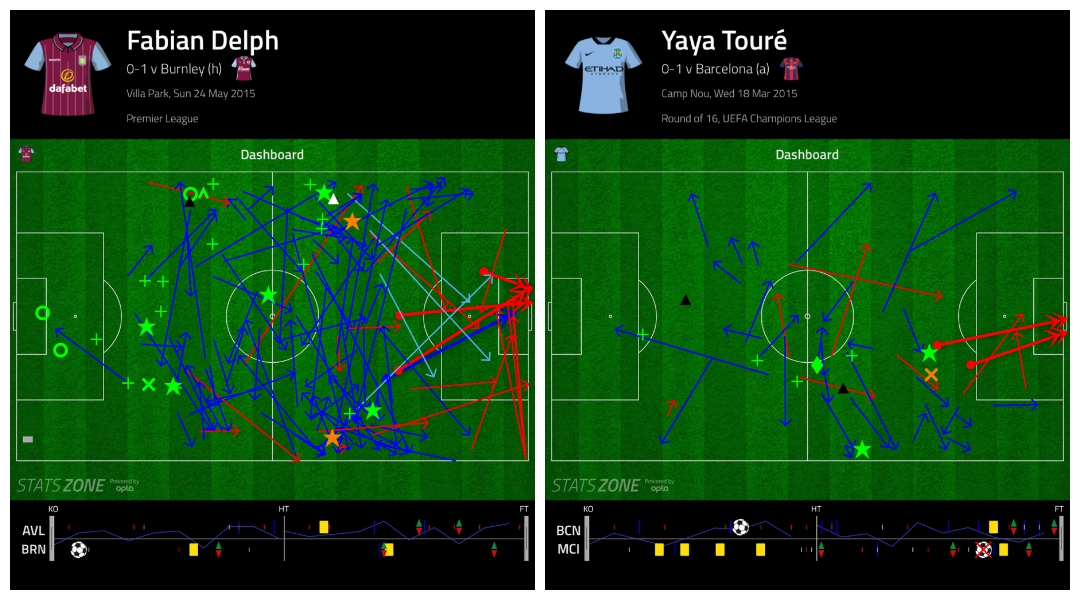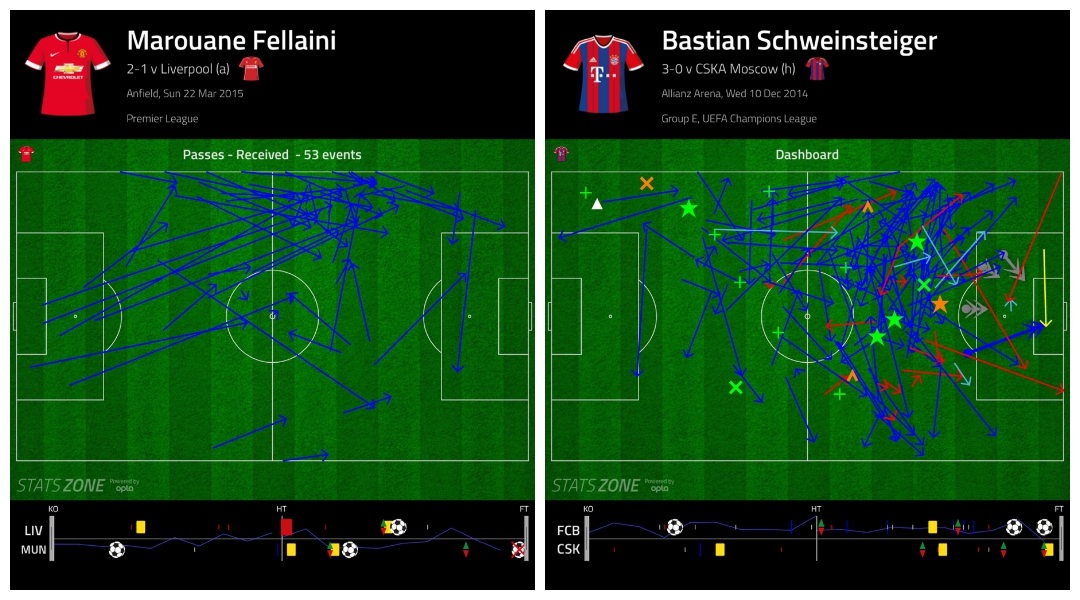The modern central midfielder: why the Premier League is struggling in Europe
English clubs have been playing catch-up in Europe, demonstrated by by their poor showing in the big competitions last season, writes Alex Keble. But that could be about to change...

The glamour, energy, and tactical fluidity of the 2015 Champions League Final made painfully clear the current failings of the English game; there is no doubt that our European representation has diminished dramatically in recent years, despite our super-rich elite gorging, each summer, on a flurry of superstars clambering for Premier League riches.
(Don't believe it? See the official UEFA co-efficients where England have slipped behind Germany.) But there is one particular role that has, until now, been overlooked by a succession of managers blind to the tactical and technical shift across world football. As the fluidity of the tactical system increases, and as traditional boundaries dictated by formation grids become increasingly redundant, it is the elite-level central midfielder that has undergone the greatest transformation.
Tactical changes

The creeping osmosis of Pep's tiki-taka tactics has certainly played its part, but the evolution away from specialised roles is, in truth, more a reflection of an increasingly refined player production line than tactical fashion. As the rapid influx of cash in the ’90s began mechanising the sport in preparation for ultimate profitability, gleaming state-of-the-art youth facilities – drilling kids from as young as five – has inevitably begun to churn out Football Player 2.0: an immaculate athlete, an all-rounder, and a frightening machine of technical excellence programmed more robustly than its predecessors to provide the engine in central midfield.
These footballers – the likes of Mateo Kovacic, Marco Verratti, Geoffrey Kondogbia – possess technical precision as a minimum requirement, and build upon this with a remarkably detailed array of skills traditionally reserved for wingers and defenders.
This is because, as the tactical landscape has progressed towards furious pressing, football has been sucked inwards; central areas are increasingly congested and regista passers are drowned out.
The modern all-round midfielder is an agile dribbler who shifts and slaloms away from trouble, is a composed distributor who links the lines, and is an intelligent presser and tackler, flitting across the pitch performing multiple roles. Note how often these players complete take-ons (stars) and tackles (crosses), while making passes across the length and breadth of the pitch.
The best features, fun and footballing quizzes, straight to your inbox every week.

Both Juventus and Barcelona are powered by the energy of these players: Arturo Vidal, Paul Pogba, and Ivan Rakitic all glide effortlessly across the pitch, acting as regista, destroyer, and playmaker in a cyclone of furious energy. But in the Premier League, where tactical nuance is bludgeoned by giggling oligarchs hurling money into a league designed for profitable stasis, these players are nowhere to be seen. It is no wonder England's impact on Europe has steadily declined this decade.
English midfields missing
What defines Juventus, Barcelona, and Bayern Munich is their constant role-reversals; their tactics are a seamless blur of movement, while English clubs remain rigidly steadfast, and thus flimsy and easily outmanoeuvred. Last season, we saw Kondogbia tear through the heart of Arsenal at the Emirates, Verratti skip and dance around Chelsea's disorganised Oscar/Fabregas combo, and Luka Modric disembowel Liverpool at Anfield.


A consistent pattern emerged as the season progressed, but this summer the Premier League's top clubs have begun to address the problem with a string of signings that should significantly improve their chances of success on the European stage. English clubs are finally ready to embrace the importance of the all-round central midfielder. At Manchester City, the rigidity of their attacking lines and jaded movement was epitomised by Yaya Toure's dramatic fall; Pellegrini's team was like a glitching machine, endlessly looping its attacking patterns. Finally awake to the dilemma, the signing of Fabian Delph - whose gangly agility pierces midfield lines effortlessly - represents an excellent addition who should reinvigorate their tactical setup. At Villa, his primary skill was linking play together quickly and aggressively, while maintaining a defensive shield.

German engineering
Manchester United have also sought to integrate a complete midfielder into their starting XI with the signing of Bastian Schweinsteiger. The German's vertical slaloms have yanked the strings in Munich for a decade, and undoubtedly his tireless running will invigorate a team who, for the majority of last season, relied upon long hoofs to Marouane Fellaini in order to speed up their transitions from defence to attack.

All-rounders win
Liverpool's replacement of Steven Gerrard with James Milner is an even more dramatic statement, perfectly capturing the growing recognition of central midfield evolution. Technical grace is no longer the defining feature, but instead merely a foundation; Milner's work rate and positional darts are far more suited to the modern game than Gerrard's quiet distribution.
Chelsea's situation is more nuanced, although Cesc Fabregas clearly lacks the integrity of a modern central midfielder. His positional indiscipline and defensive inadequacies have left him strangely outdated; just 10 years ago his attributes were perfect for his position, and yet now his skills are too few and too technically specific to be trusted anywhere other than the No.10 role. Both Koke and Axel Witsel had been identified as players to help merge those formation lines more fully, but Chelsea's summer has proved unusually frustrating thus far.
Cazorla's new role
Perhaps surprisingly, it is Arsenal, so often accused of outdated tactical strategies drilled by an ageing coach, who already utilise a complete midfielder. Recognising the new necessities, Arsene Wenger shifted Santi Cazorla from a high playmaker position to a deeper role at the beginning of last season.
The impact has been monumental, and leaves Arsenal looking capable of a title challenge for the first time in a decade (and may be partly why they lost last Saturday, instead fielding the industrious Coquelin).
It seems symbolic that the Premier League would begin to catch up with Europe not by innovating or cultivating young players to new and challenging positions, but instead by pulling a 30-year-old playmaker back and sticking him in unfamiliar territory.

But in Cazorla's shift, we see how the standards of modern football have dramatically risen; as tactical strategies become hyper-intelligent, interconnected swarms, and as the technical quality of the individual continues to increase, the modern central midfielder must now boast all the traits – dribbling, agility, speed – of an attacking playmaker, while maintaining the composed passing and defensive poise that the position has traditionally required. Judging by the transfer activity of the top five clubs this summer, it would appear that the Premier League has finally woken up to that fact. Expect a stronger showing in Europe this season.
More analysis like this on FFT.com
STATS ZONE Free on iOS • Free on Android
